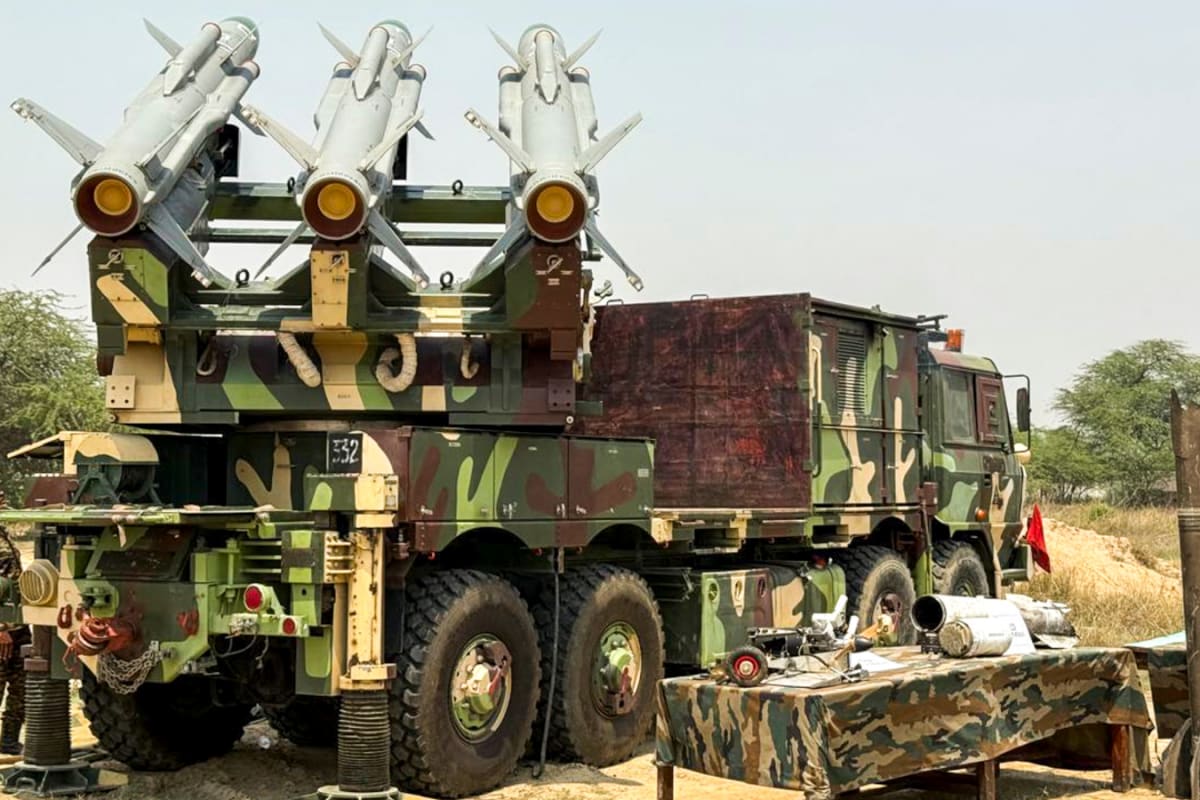The global landscape of air defense is undergoing a dramatic transformation, driven by evolving threats and rapid technological advancements. India, Israel, and the United States, three nations at the forefront of this revolution, are developing and deploying sophisticated systems to safeguard their skies. These efforts involve indigenous innovation, strategic international partnerships, and a focus on countering a wide spectrum of aerial threats, from ballistic missiles to drones.
India's Multi-Layered Approach
India is rapidly building a multi-layered air defense architecture, combining indigenous systems with imported technology. Key components of this system include:
- Akash Surface-to-Air Missile (SAM): This indigenous system, developed by the Defence Research and Development Organisation (DRDO), is a medium-range missile capable of neutralizing various aerial threats, including fighter jets, drones, and missiles. Recent combat scenarios, such as Operation Sindoor in May 2025, have demonstrated its effectiveness, particularly against saturated drone and missile attacks. The Akash system can engage multiple targets simultaneously, tracking up to 64 targets and guiding 12 missiles concurrently. Variants like Akash-NG offer extended ranges up to 80 km and advanced features such as active electronically scanned array (AESA) radar.
- Medium-Range Surface-to-Air Missile (MR-SAM): A joint Indo-Israeli development, the MR-SAM provides medium-range air defense with a range of 70-100 km. It utilizes an active radar homing seeker and can intercept aircraft, missiles, and drones at high altitudes. The MR-SAM complements the Akash system in India's layered defense grid.
- S-400 Triumph: This advanced Russian system, with a range of up to 400 km, adds a long-range dimension to India's air defense capabilities.
- Project Kusha: An indigenous long-range surface-to-air missile (SAM) system that will be able to neutralise a wide range of aerial threats, including aircraft, missiles, and drones, at extended ranges. Prototype development is expected within 12 to 18 months, followed by user trials.
India's air defense strategy also involves close collaboration with Israel, particularly in the development of the Barak 8 missile system. This system, available in both land and maritime versions, can intercept targets up to 150 km away and exemplifies the successful technology cooperation between the two countries. Further solidifying defense cooperation, India and Israel have established a bilateral sub-working group focusing on defense industrial cooperation to facilitate technology transfers to India.
Israel's Multi-Tiered Defense Array
Israel has developed one of the most advanced and comprehensive air defense systems in the world, designed to counter a diverse range of threats from short-range rockets to long-range missiles. The country's multi-layered defense array includes:
- Iron Dome: This mobile, all-weather system intercepts and destroys short-range rockets and artillery shells fired from distances of 4 to 70 kilometers. It is designed to protect populated areas from attacks and has been upgraded to handle UAV, cruise missiles, and UAS threats.
- David's Sling: Designed to intercept short-to-medium range missiles and long-range surface to surface missiles, this system is also capable of intercepting drones and cruise missiles.
- Arrow-2 and Arrow-3: These long-range interceptors are designed to engage threats in and outside the atmosphere, respectively, with the Arrow-3 system offering longer range and higher altitude engagement capabilities.
The United States has been a key partner in the development and funding of Israel's air defense systems, particularly the Iron Dome. The U.S. has contributed billions of dollars to the system's development and deployment, highlighting the strategic importance of this cooperation.
The United States: A Global Approach to Air Defense
The United States maintains a global network of air defense systems, designed to protect its homeland, deployed forces, and allies. Key components of the U.S. air defense architecture include:
- Patriot Missile System: This system combines phased array radar and track-via-missile guidance. The Patriot system has been upgraded over the years to counter tactical ballistic missiles, cruise missiles, and advanced aircraft.
- Terminal High Altitude Area Defense (THAAD): Designed to intercept and destroy short-, medium-, and intermediate-range ballistic missile threats in their terminal phase of flight.
- Aegis Ballistic Missile Defense: Employs warships equipped with advanced radar systems to engage short-to-intermediate-range ballistic missiles.
Recognizing the evolving threat landscape, the U.S. is investing in next-generation technologies to counter hypersonic weapons and other emerging threats. This includes the development of space-based sensors for early missile detection and tracking, as well as advanced interceptor programs. President Trump announced a plan for a "golden dome" missile defense system, inspired by Israel's Iron Dome, to protect the United States from missile threats.
Strategic Implications and Future Trends
The efforts by India, Israel, and the U.S. to reinvent air defense have significant strategic implications. These advanced systems enhance national security, deter potential adversaries, and contribute to regional stability. Several key trends are shaping the future of air defense:
- Hypersonic Weapon Defense: The development of hypersonic missiles is driving the need for new detection and interception technologies.
- Drone and Cruise Missile Defense: The proliferation of drones and cruise missiles requires systems capable of countering these low-flying, maneuverable threats.
- Artificial Intelligence and Automation: AI and automation are playing an increasing role in air defense systems, enhancing their ability to track and engage multiple targets simultaneously.
- Integration and Interoperability: Integrating different air defense systems and ensuring interoperability with allied forces are crucial for effective defense.
As technology continues to advance and new threats emerge, India, Israel, and the United States will likely remain at the forefront of air defense innovation. Their efforts to develop and deploy sophisticated systems will shape the future of air warfare and contribute to global security.

